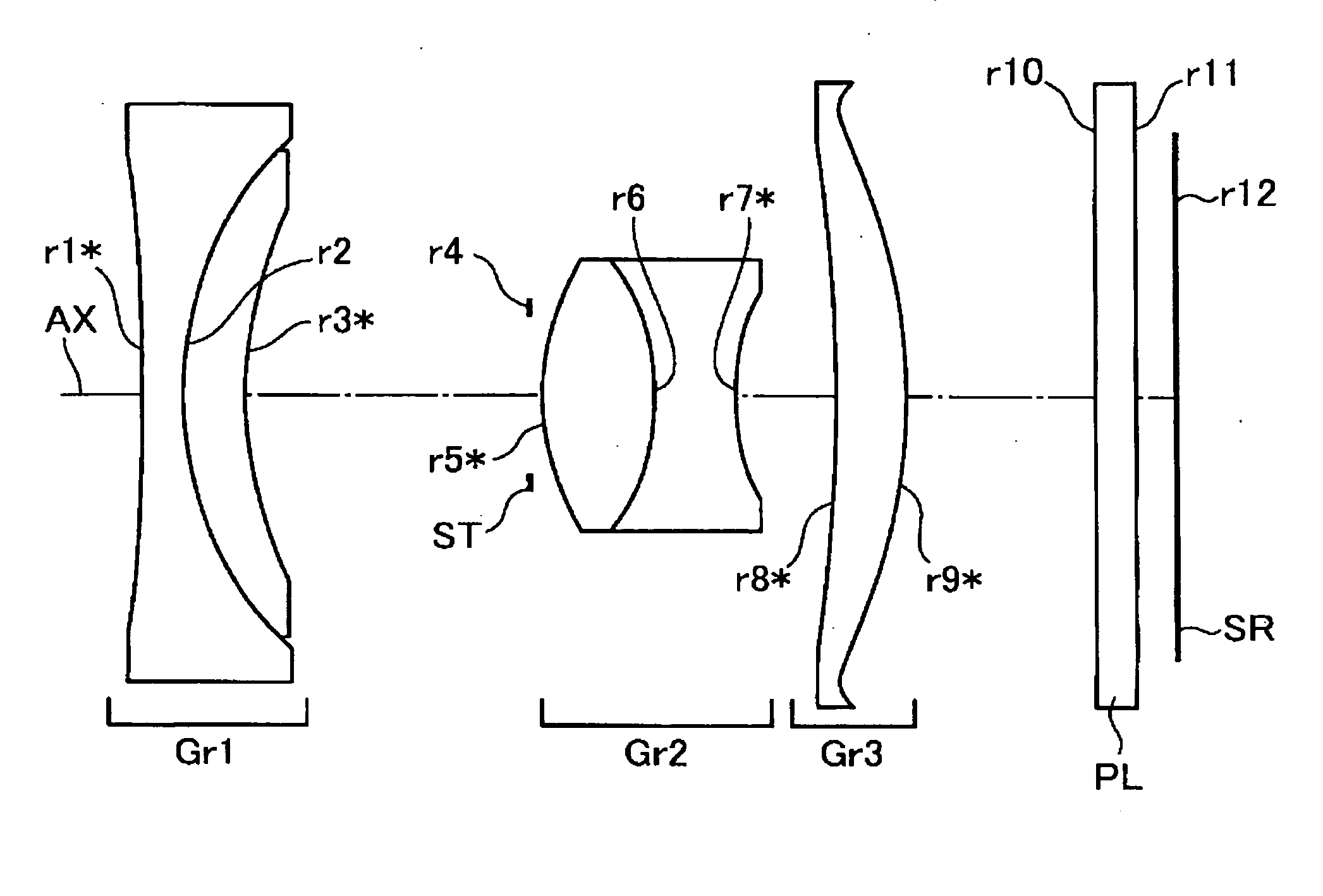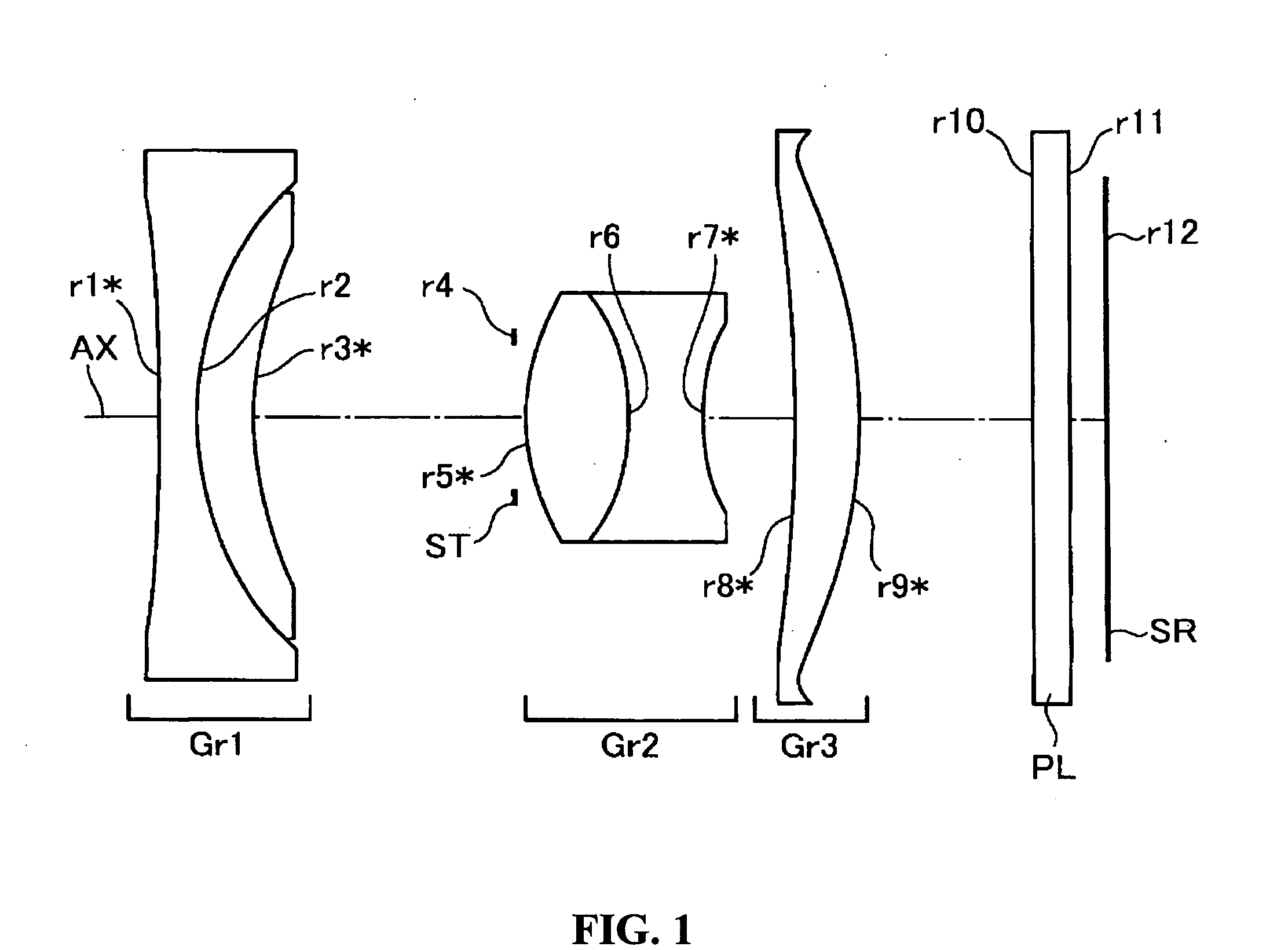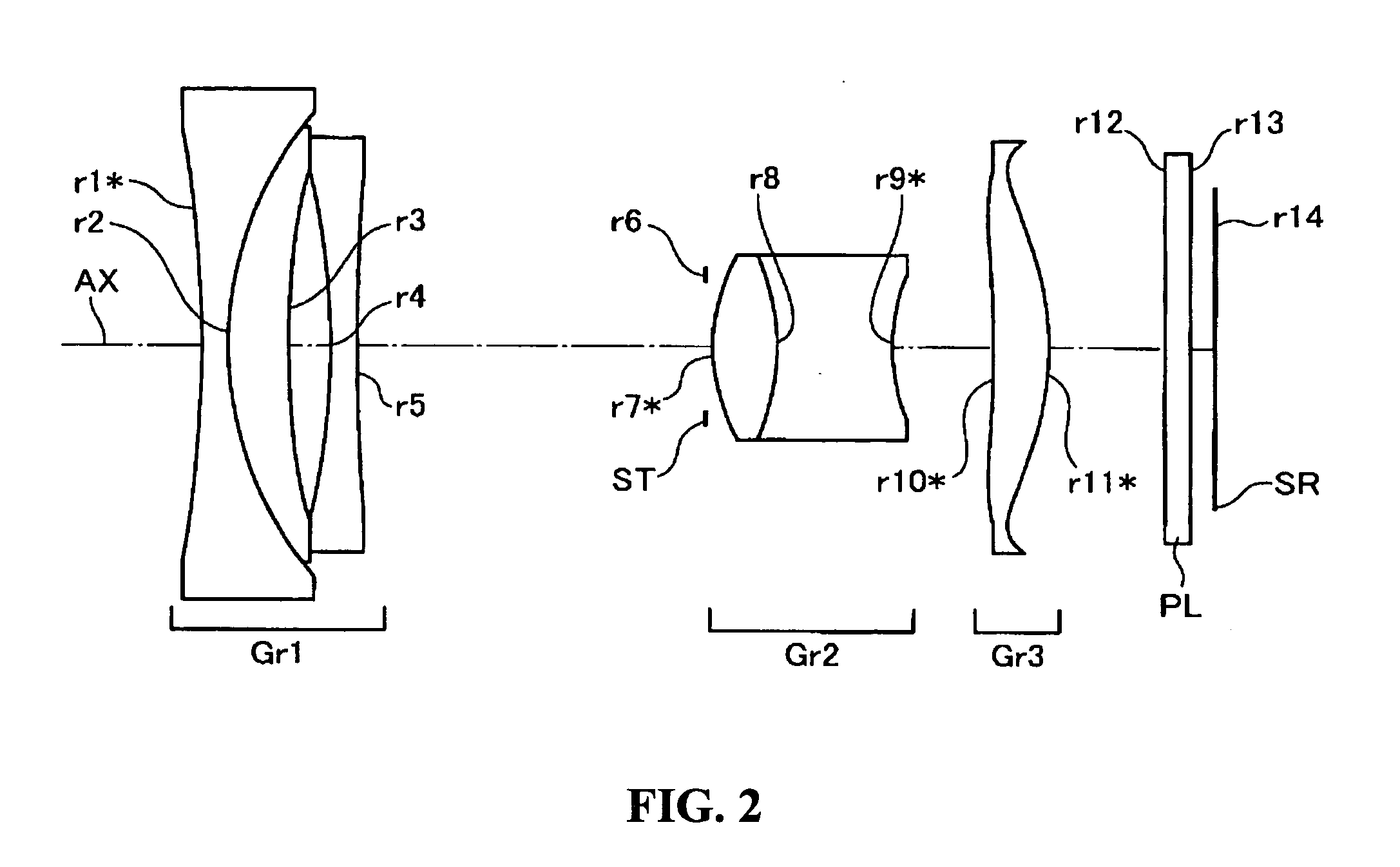Variable power optical system, imaging apparatus, and digital apparatus
- Summary
- Abstract
- Description
- Claims
- Application Information
AI Technical Summary
Benefits of technology
Problems solved by technology
Method used
Image
Examples
embodiment 1
[0046]FIG. 1 is a cross sectional view longitudinally taken along the optical axis (AX) showing an arrangement of lens groups in a variable power optical system of Embodiment 1. In FIG. 1 and FIG. 2 to FIG. 7 explained below, the lens arrangement in wide-angle end (W) is shown. Embodiment 1 is configured by, in the order from the object side (left side in FIG. 1), a first lens group (Gr1) having a negative optical power as a whole, a second lens group (Gr2) having a positive optical power, and a third lens group (Gr3) having a positive optical power. Further, in each embodiment, an optical stop (ST) for adjusting the quantity of light is arranged on the first lens group (Gr1) side of the second lens group (Gr2). A parallel plane plate (PL) and an imaging element (SR) are arranged adjacent to the third lens group (Gr3) on the side away from the second lens group (Gr2) (adjacent to the fourth lens group (Gr4) on the side away from the third lens group (Gr3) in Embodiment 4).
[0047] Te...
embodiment 2
[0052]FIG. 2 is a cross sectional view longitudinally taken along the optical axis (AX) showing an arrangement of lens groups in a variable power optical system of Embodiment 2. The variable power optical system of Embodiment 2 is configured in the following way in the order from the object side. The first lens group (Gr1) having a negative optical power as a whole is configured by a cemented lens of a negative lens that is concave on both sides and a positive meniscus lens that is convex on the object side, and a negative lens that is concave on both sides. The second lens group (Gr2) having a positive optical power as a whole is a cemented lens of a positive lens that is convex on both sides and a negative lens that is concave on both sides. The third lens group (Gr3) having a positive optical power as a whole is a single positive meniscus lens that is convex on the image side.
[0053] In Embodiment 2 of such lens configuration, all of the first lens group (Gr1), the second lens gr...
embodiment 3
[0054]FIG. 3 is a cross sectional view longitudinally taken along the optical axis (AX) showing an arrangement of lens groups in a variable power optical system of Embodiment 3. The variable power optical system of Embodiment 3 shown in FIG. 3 has each lens group configured in the following way in the order from the object side. The first lens group (Gr1) having a negative optical power as a whole is a cemented lens of a negative lens that is concave on both sides, and a positive meniscus lens that is convex on the object side. The second lens group (Gr2) having a positive optical power as a whole is a cemented lens of a positive lens that is convex on both sides and a negative lens that is concave on both sides. The third lens group (Gr3) having a positive optical power as a whole is a single positive meniscus lens that is convex on the image side.
[0055] In Embodiment 3 of such lens configuration, all of the first lens group (Gr1), the second lens group (Gr2) and the third lens gr...
PUM
 Login to View More
Login to View More Abstract
Description
Claims
Application Information
 Login to View More
Login to View More - R&D
- Intellectual Property
- Life Sciences
- Materials
- Tech Scout
- Unparalleled Data Quality
- Higher Quality Content
- 60% Fewer Hallucinations
Browse by: Latest US Patents, China's latest patents, Technical Efficacy Thesaurus, Application Domain, Technology Topic, Popular Technical Reports.
© 2025 PatSnap. All rights reserved.Legal|Privacy policy|Modern Slavery Act Transparency Statement|Sitemap|About US| Contact US: help@patsnap.com



